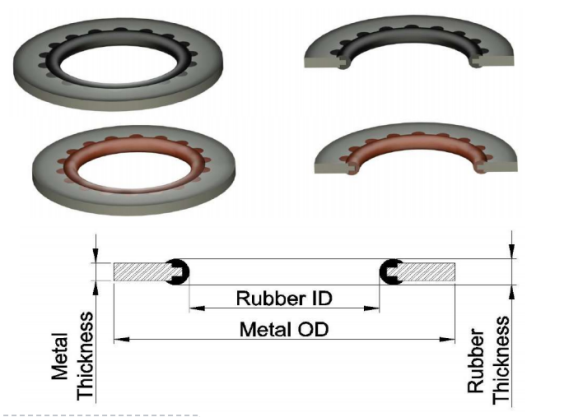steering rack oil seal
Understanding the Importance of Steering Rack Oil Seals
The steering system of a vehicle is critical for maintaining control and ensuring a smooth driving experience. Among its many components, the steering rack plays a pivotal role in steering precision and feel. A lesser-known but crucial part of this system is the steering rack oil seal. In this article, we will explore the function of steering rack oil seals, the effects of seal failure, and the importance of regular maintenance.
What is a Steering Rack Oil Seal?
A steering rack oil seal is a critical component that prevents hydraulic fluid from leaking out of the steering rack assembly. The steering rack itself is responsible for converting the rotational motion of the steering wheel into lateral movement needed to turn the vehicle's wheels. The oil within the steering rack serves as a lubricant and hydraulic fluid, enabling smooth operation and reducing wear on the components.
These seals are typically made from durable materials designed to withstand high pressures and varying temperatures. Common materials include rubber and synthetic compounds that provide flexibility and resilience, thus ensuring a proper seal over time.
The Function of Steering Rack Oil Seals
The primary function of the steering rack oil seal is to maintain hydraulic fluid pressure within the steering system. This pressure is necessary for effective steering operation, as it helps in transmitting the driver's input (the movement of the steering wheel) to the wheels. If the oil seal fails, the fluid can leak out, leading to a drop in hydraulic pressure, and consequently affecting the steering response.
Additionally, steering rack oil seals help keep contaminants such as dirt and moisture from entering the steering system
. This is crucial for preventing premature wear and tear on the steering components, which can lead to costly repairs down the line.Signs of a Failing Steering Rack Oil Seal
Recognizing the signs of a failing steering rack oil seal is essential for maintaining the integrity of your vehicle's steering system. Some common indicators include
steering rack oil seal

1. Fluid Leaks The most obvious sign of a failing oil seal is the presence of fluid beneath the vehicle. If you notice a reddish or clear fluid leaking from your car, it could indicate a problem with the steering rack seals.
2. Steering Difficulty If you experience increased difficulty in steering, particularly at low speeds or while parking, it may be due to insufficient hydraulic pressure caused by a leaking oil seal.
3. Unusual Noises Whining or groaning noises when turning the steering wheel can indicate that the steering system is not receiving enough fluid, which is often a result of oil seal damage.
4. Uneven Tire Wear Faulty steering can lead to misalignment, resulting in uneven tire wear. If you notice unusual wear patterns on your tires, it is wise to inspect the steering system, including the oil seals.
The Importance of Maintenance
Regular maintenance of the steering system, including the inspection and replacement of oil seals as necessary, is vital for long-term vehicle performance. Mechanics typically recommend checking the steering components during regular vehicle inspections, particularly if you notice any of the aforementioned signs.
Timely replacement of damaged steering rack oil seals can save vehicle owners significant repair costs in the long run. It also enhances safety by ensuring that the steering system remains responsive and effective.
Conclusion
In summary, steering rack oil seals play a crucial role in the overall performance and safety of a vehicle's steering system. Understanding the function and importance of these seals can help you maintain your vehicle better and preemptively address potential issues. Regular inspections and timely maintenance can ensure that your steering system functions correctly, providing you with a safe and pleasant driving experience.
-
Understanding the Front Main Engine Seal: Purpose, Maintenance, and Installation
News Jul.29,2025
-
Understanding O-Rings and Seal Rings: Types, Applications, and Custom Solutions
News Jul.29,2025
-
Understanding Crankshaft Oil Seals: Rear Seals, Pulley Seals, and Their Role in Engine Integrity
News Jul.29,2025
-
The Importance of Front and Rear Crankshaft Seals in Engine Performance and Oil Management
News Jul.29,2025
-
Crank Oil Seals: Functions, Types, and Cost Considerations in Engine Maintenance
News Jul.29,2025
-
A Comprehensive Guide to O-Rings and Seals: Types, Materials, and Global Applications
News Jul.29,2025
-
Mastering Diesel and Performance Engine Maintenance: A Guide to Critical Oil Gaskets
News Jul.28,2025
Products categories















